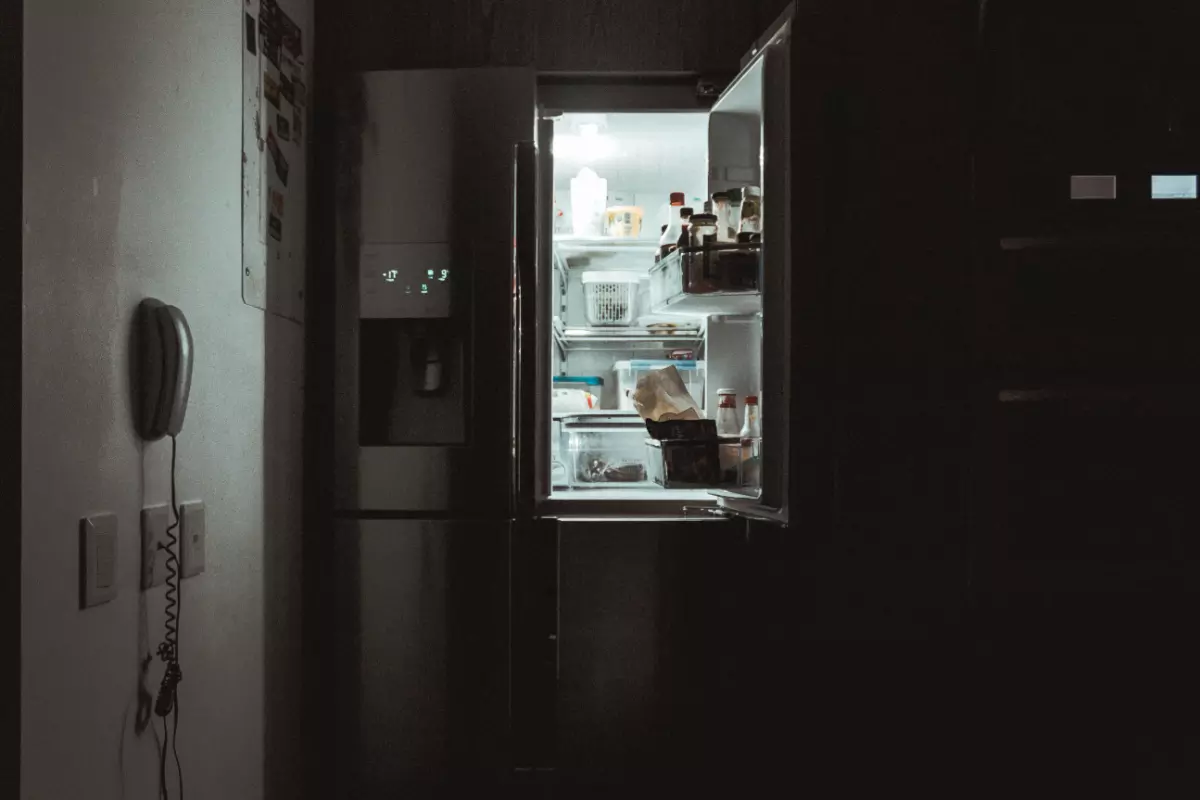Have you considered how refrigerators are disposed of? We look at what happens to a fridge when its recycled. Find out more about the concerns of harmful substances within a fridge.
How Are Refrigerators Disposed Of?
Disposing of fridge freezers is no easy job. Especially when you're planning to get rid of the appliance in the most environmentally conscious and responsible way possible.
Just like other large household items such as mattresses, disposing of fridge freezers request a little bit more care and attention.
You can't simply throw the appliance in a tip like you can with general household rubbish. The refrigerant and insulation contained within the fridge freezer are classed as hazardous materials in the eyes of the law. This isn't even to mention the risk of highly harmful and dangerous gases which you can find leaking from the appliance if it is not disposed of in the safest manner possible.
What Happens To A Fridge When Its Recycled?
Unless your fridge is passed on for reuse and assuming that you have used one of the responsible, safe and approved ways to dispose of the unit, your fridge freezer should end up in a dedicated refrigeration recycling plant.
In spite of all of the highly dangerous substances held within the appliance, over 95% of the average refrigeration unit is completely recyclable. Fridges are always deconstructed inside a sealed environment. This is so that any Ozone Depleting Substances within the fridge freezer can be safely removed.

The remaining materials that make up the fridge are then all separated mechanically into their individual product streams. This includes ferrous metals, non-ferrous metals, plastics, and foam.
These materials can then be reused and recycled. Below is a more in-depth step by step guide through the fridge freezer recycling process.
Step 1:
First, the fridge's compressor is separated from the fridge. The fridge's oils and gases are then removed under a vacuum. CFCs (chlorofluorocarbons) are then removed from the oils using ultrasonic technology. Some compressors can even be reused after this process.
Step 2:
The fridges are then shredded using an enclosed nitrogen atmosphere. Any CFC gases which remain present in the insulating foam are then released.
Step 3:
These shredded components are then dried out and the CFC gases and nitrogen are carried off for separating.
Step 4:
An insulating foam powder found within the fridge is separated by a sieve and is later collected for disposal.
Step 5:
Ferrous metal is separated using a powerful overhead magnet. The non-ferrous metals are then separated from the plastic for recycling.
Step 6:
CFCs are separated from the nitrogen by cooling the gas to -160 centigrade. This causes the CFCs to liquefy and they can then be destroyed through high-temperature incineration.

What Are The Harmful Substances In Fridges?
The majority of fridges made before the year 2000 will contain what are known as Chlorofluorocarbons or Hydrochlorofluorocarbons. Usually written as CFCs and HCFCs. These compounds can be found in the insulation material of the fridge, or in the fridges refrigerant.
CFCs and HCFCs are manmade compounds that are made up of carbon, fluorine, chlorine, and hydrogen. These compounds are both non-flammable and non-toxic and were being used extensively in aerosols, refrigerators and solvents until it was later discovered that the CFC molecules were being broken down through UV radiation, which was, in turn, releasing a chlorine atom into the atmosphere's ozone.
This was incredibly harmful to the environment so a treat was signed to phase out the production of appliances and items holding these compounds,
How Can I Tell If My Fridge Contains Harmful Substances?
If your fridge was produced before the year 2000 then it is highly likely that it will contain Ozone Depleting Substances. These are usually found in the fridge freezer's insulating foam or refrigerant.
Your kitchen's fridge should be marked with a plate stating the manufacturer, model. serial number, and most importantly the type of refrigerant that has been used.
Pre-1994, the serial codes you are looking for are R11, meaning CFCs can be found in the insulation, or R12 meaning CFCs are being used as a refrigerant.
From the years 1994 to 2000, the codes you will be looking for are R22, R141b, and R142b. This means that HCFCs are contained in the insulation. If your serial code reads R134a then there are HFCs being used as a refrigerant.

What Legislation Is Relevant To Disposing Of An Old Fridge?
Firstly, the duty of care. All household members who are getting rid of unwanted waste, have a duty of care to ensure that the materials are being disposed of in the safest and most responsible way possible.
These rules are named The Waste (Household Waste Duty of Care) (England and Wales) Regulations 2005. This means that you can either take your fridge to a local licensed waste facility, or you can ensure that if you use a third party to dispose of the appliance, they are registered as a waste carrier with the Environment Agency and provide you with an appropriately completed Waste Transfer Note. Breaching your duty of care is a criminal offence.
Secondly, the removal of ODS. All refrigeration units which contain Ozone Depleting Substances must have those substances removed in a highly controlled manner before the appliance is scrapped. If you fail to comply with these regulations then you receive a fine of up to £2,500 and will be eligible for prosecution.
Finally, recycling and recovery. The Waste Electrical and Electronic Equipment regulations, also known as WEEE Regs, place an obligation on manufacturers, distributors, retailers, local authorities, importers, exporters, business users, and waste management companies to always reuse, recycle, and recover fridge units whenever it is possible.

How Should I Dispose Of A Fridge
When the time comes to dispose of a fridge on your property then there are various things to consider in order to ensure that you are taking all of the correct steps and doing it all in an environmentally friendly manner. Fridges cannot simply be placed in a skip like other household furniture and other installations can be.
If you illegally fly-tip, then you can be fined up to £2500. This is never an option.
The reason why specialist disposal is needed for fridges is that hiding within fridge freezers are compounds that are incredibly harmful to the environment. This means they cannot simply be thrown away. Since January 2002, all ozone-depleting substances must be removed from fridges before they can be recycled or thrown away.
2 Ways To Legally Dispose OF yOUR fRIDGE
Waste Recycling Sites
Simply by contacting your local authority or council, you can find out all of the whys and wheres of how to dispose of your fridge yourself.
Your fridge should be taken to a designated hazardous waste recycling plant, this should not incur any cost.
Do ensure though that you are taking your fridge to a site where fridge freezers are actively being disposed of. This is because not all waste recycling sites actually take care of fridge freezers.


Arranging A Collection
Some companies can provide you will collection and disposal services for fridges which are no longer needed within their current premises. The companies which usually provide this kind of service can include local furniture recycling films and simply waste removal companies.
This service will take all of the responsibility away from a person with an unwanted fridge, usually at a reasonable price.
If you're currently waiting for a new fridge to arrive, then the company who drops the appliance up for you may agree to dispose of your old fridge for you.
Get in touch today if you have any bulky waste collection that needs collecting and disposed of correctly in Maidstone and Kent. Our experience and professionalism can help alleviate any stress or concerns you have concerning wastage.


